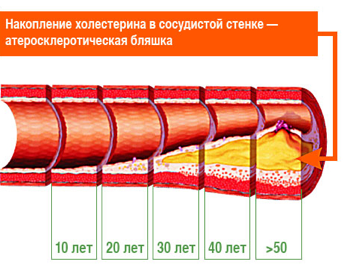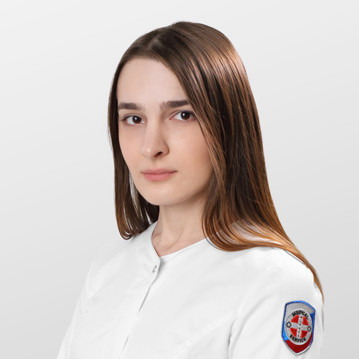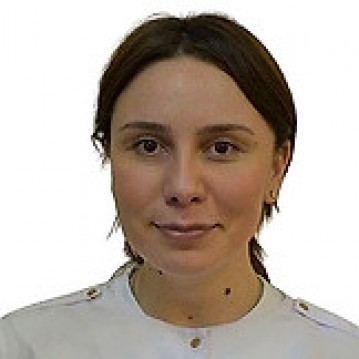
Atherosclerosis developmental stages
First stage:
The formation of visible lipid deposits on the inner lining of the arteries (the so-called “fat strips”).
Second stage:
Further deposition of lipids (fats and cholesterol)
The appearance of rounded dense formations (atheromas) or atherosclerotic plaques protruding into the lumen of the vessel and narrowing it.
Third stage:
In the thickness of the plaques begins necrosis (violation).
The progression of the process leads to resolution of the plaque, hemorrhage and the formation of blood clots in the ulceration sites. Expressions can reduce the strength of the walls of the vessels, which may cause aneurysms (especially in the aorta). At the site of the manifestations, dense scars begin to form, affecting the elasticity of the walls of the arteries, necessary to maintain normal blood pressure.
Diagnostics
Atherosclerosis, depending on the location, can be the basis for the following diseases:
- Atherosclerosis of mesenteric arteries (intestinal infarction).
- Atherosclerosis of the arteries of the lower extremities (intermittent claudication, gangrene of the feet and lower legs).
- Cerebrovascular disease (transient ischemic attack, ischemic stroke).
- Atherosclerosis of the renal arteries.
- Coronary heart disease (angina pectoris, myocardial infarction, sudden cardiac death, arrhythmias, heart failure).
- Atherosclerosis of the aorta.

To clarify the diagnosis, the following additional studies can be prescribed:
- Multispiral computed tomography. Visualization of the wall of arteries and atherosclerotic plaques.
- Electrocardiography, with stress tests, ultrasound of the heart, aorta.
- Duplex and triplex scanning. The study of blood flow with ultrasound imaging of blood vessels: carotid arteries, abdominal aorta and its branches, arteries of the lower and upper extremities. Detects atherosclerotic plaques in the arteries, evaluates the state of blood flow in the vessels.
- Angiography, coronarography, intravascular ultrasound. These are invasive research methods. Identify atherosclerotic plaques, allow you to evaluate the total atherosclerotic lesion. Applied in patients with clinical manifestations of atherosclerosis (coronary heart disease).
Atherosclerosis Treatment
- Hypocholesterol diet
- Physical exercise
- Smoking cessation
- Drug treatment
- Surgery

































